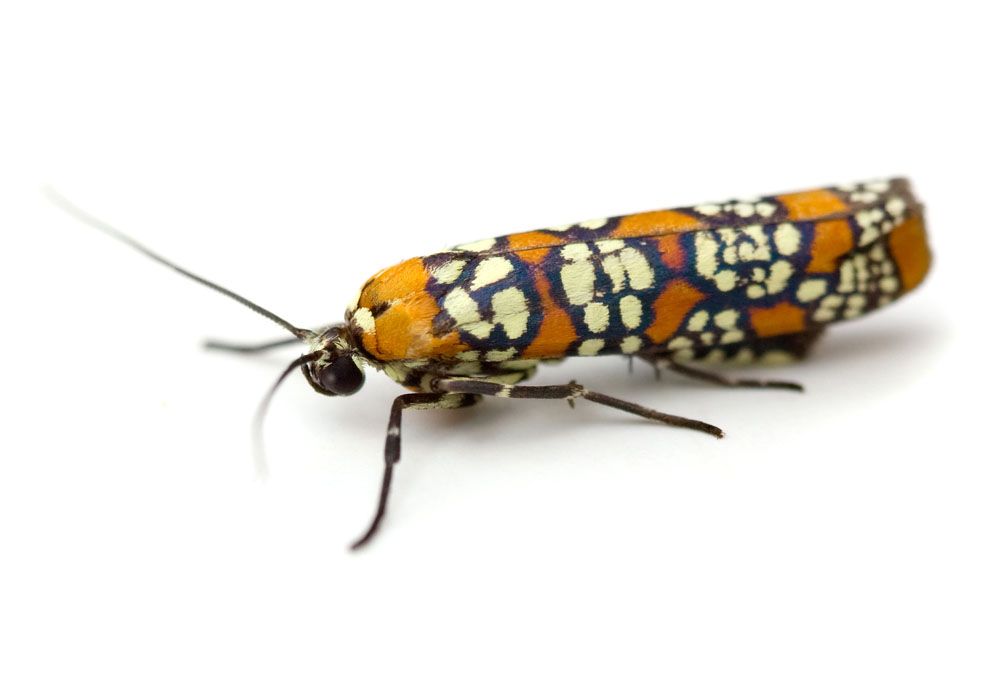
Ailanthus Webworm – Atteva punctella
Ailanthus Webworm
Scientific Name: Atteva aurea (formerly known as Atteva punctella)
Common Name: Ailanthus Webworm
Appearance: Ailanthus webworm has a long and thin body with beautiful wings that get curved along the length of the body. It is almost 18-30 mm long, including the length of its wings. Forewings are of orange color with black bands having many small white spots. It has black filament-like antennae that are held in an upward position in front of the head.
Host Plants or Food: Ailanthus webworms love eating the leaves of ailanthus and paradise tree. Adult Ailanthus webworms also feed on the nectar of the flowers, thus also helping in pollination.
Territory: Throughout North America (New York, North Carolina, Florida, Texas) and West Indies.
Mode of Damage: Ailanthus webworms are leaf chewers; the larvae eat the leaves of the trees and shrubs.
Habits and Life History:
Unlike most moths, Ailanthus webworms mostly come out during the day though they are also seen flying around the lights at night.
Being called webworms, they live inside loose webs that enclose 2-3 leaves. This enables them to feed on the leaves without leaving the web.
They are gregarious insects, which means they live in a communal. A communal usually contains all the life stages of the Ailanthus webworm.
Ailanthus webworms undergo all four life stages, including Eggs, caterpillars, pupae, and adults.
The adult lays eggs individually, not in clusters. The caterpillars are long and slender with brownish body. They have black and white stripes running down the length of the body.
They complete their life cycle in almost 4 weeks and are seen throughout the summer from April to November.
